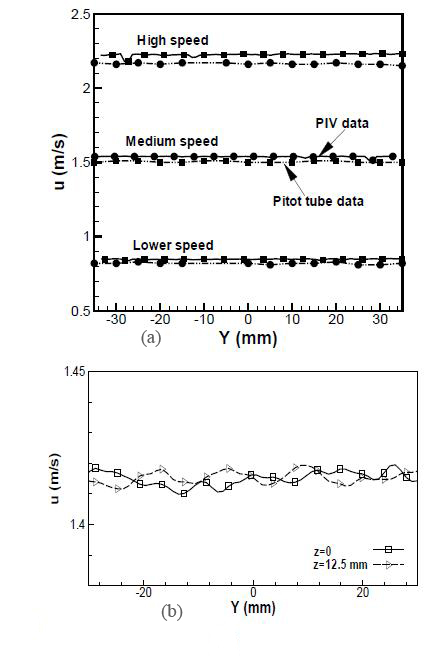Influence of end-plates
The effect of end conditions on the aerodynamics behind bluff bodies is a known fact.
The wake stability and the critical Reynolds number are also influenced by the aspect
ratio of the cylinder. End plates reduce three-dimensional effects, i.e. they shield the
cylinder from the interfering wall boundary layers. Different designs of end plates have
been proposed in the literature. The effect of aspect ratio on the wake structure is also
affected by the end plate design.
Measurements were done with and without endplates. Extensive iterations of the
endplate geometry and their angle to the incoming flow were carried out to ensure parallel
vortex shedding. The endplate parameters are based on work of Stansby (1974) and
Norberg (1994). The base pressure can be reduced by suitably designing the end plates to keep the flow two dimensional (Stansby, 1974).

Figure 3.27: (a) Velocity profile of the incoming flow in the test cell from PIV and Pitot
static tube measurements at three different tunnel speed settings (b) The incoming
velocity pro�le at two di�erent spanwise planes. The coordinate z = 0 falls on the
vertical mid-plane of the test cell.
|